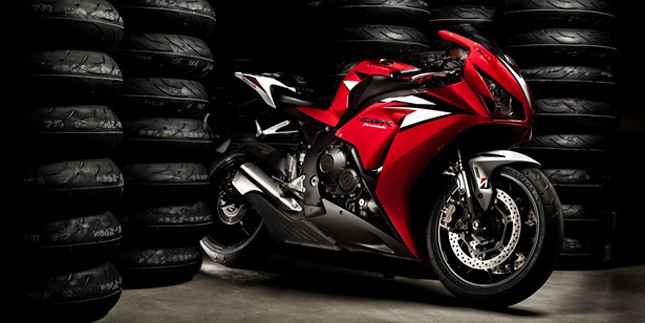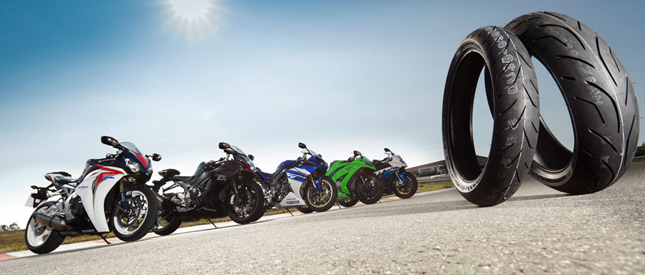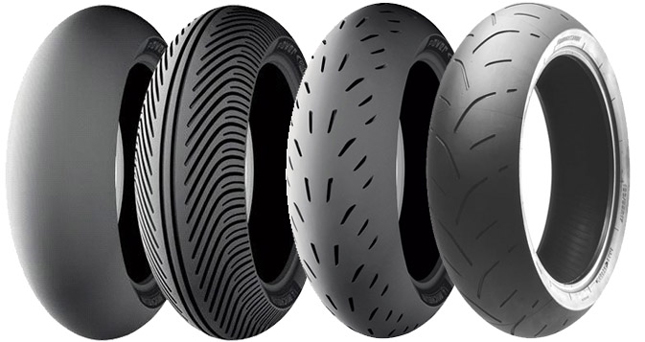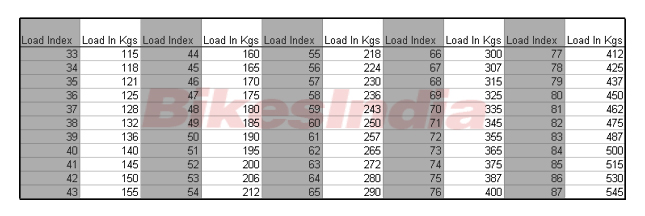 The tyres are as critical component of your bike as bike's engine, it is normally seen that even riders who take riding seriously often do not take tyres as seriously as they do their engines. Seldom we care about the air pressure in our bike's tyres and having them checked when we stop for the refueling is a luxury for our poor tyres.
The tyres are as critical component of your bike as bike's engine, it is normally seen that even riders who take riding seriously often do not take tyres as seriously as they do their engines. Seldom we care about the air pressure in our bike's tyres and having them checked when we stop for the refueling is a luxury for our poor tyres. However, apart from the general care of our bike's tyres, we should be aware of the other important aspects of them as well. In today's modern motorcycle tyres there are wide variety of them available in the market. A lot of them you must have come across but all I felt that the more you get to know about them the more you get confuse. It is an attempt to simplify the technical jargon used on tyres and to limit the chance of confusion.
To begin with, assuming that you all know the difference between tubed tyres and tubeless tyres I am moving forward with the common itinerary used in both types of tyres.
 Speed Rating:
Speed Rating:The first and foremost thing to know about the tyre is the speed rating and it becomes even more vital when we talk about the real fast bikes- the super sportbikes; This is the alphabetical letter (code number) mentioned at the end of the tyre size code which is imprinted on the sidewall of the tyre, for eg: the tyre size rating code of Suzuki Inazuma 250 is; 140/70- 17 66H, here the alphabet "H" denotes the maximum safe speed limit/ rating and in this case it is 210 Kmph.
Here is the Table of Speed Rating Code:
L - 120 kmph
M - 130 kmph
N - 140 kmph
P - 150 kmph
Q - 160 kmph
R - 170 kmph
S - 180 kmph
T - 190 kmph
U - 200 kmph
H - 210 kmph
V - 240 kmph
W - 270 kmph
Y - 300 kmph
Z - >240 kmph
L - 120 kmph
M - 130 kmph
N - 140 kmph
P - 150 kmph
Q - 160 kmph
R - 170 kmph
S - 180 kmph
T - 190 kmph
U - 200 kmph
H - 210 kmph
V - 240 kmph
W - 270 kmph
Y - 300 kmph
Z - >240 kmph
 How to interpret the Tyre Rating Code?
How to interpret the Tyre Rating Code?The code written on the side wall of the tyre can be decoded as entire information of the tyre including its dimensions, capacity, manufacturer, speed rating and type of the tyre. For eg: the same tyre rating code of Suzuki Inazuma- 140/70- 17 66H
- Here, "140" is the section width of the tyre in mm, that means it's the width of the tyre after it is fitted on the rim and properly inflated.
- "70" is the aspect ratio, and it is measured as percentage of the section width. It denotes the side wall height or thickness of the tyre on the ground, which is measured from the last peripheral tread and the bead of the tyre. In this case "70" refers to the height of the side wall which is 70% of the section width which in this case is 140mm. If we calculate, the 70% of 140mm comes 98mm and hence the height of the side wall of the tyre is 98mm.
- "17" refers to the rim size or the diameter of the wheel for which the tyre is apt. This number is measured in Inches.
- In some tyres there is "B" or "R" imprinted after the rim size, this refers to the type of the tyre. "B" means it is "Bias ply" type which generally is a tube type tyre, whereas "R" refers to the "Radial tyre".
With Speed rating it is generally "Load Index" imprinted, it is the safe maximum load capacity of the tyre. In this case it is "66" and as per the chart below mentioned it is 300 Kgs.
 Dos & Don'ts Of Motorcycle Tyres:
Dos & Don'ts Of Motorcycle Tyres:Every motorcycle is designed with specific chassis and suspension setup, the tyres are designed keeping the handling of the bike into consideration. Changing the tyres with non specified rating code could lead to a poor handling of the bike and in worst case scenario it could prove fatal.
- Never mix Bias ply tyres with the Radial tyres and visa versa, always use either type of the tyres at both the ends.
- Never swap the tyres from front to rear or visa versa.
- Never use automotive tyres other then two wheeler tyres on the bikes even if they are of the same specification.
- Always stick to the company specified size and type of tyres, never use over size tyres on the stock rims as it may hamper the handling as well as braking and the suspensions of the bike.
- Tyres designed with the race specification may perform what it is made for but will not be good for the normal road conditions. Therefore, refrain from racing tyres if you are going for one just for the fun of it and will actually going to use them on street condition.
- Inspect your bike tyres on regular basis to spot any abnormality. Bulges on the side wall of the tyre is a sign of separation of the ply from inside and if avoided can result into fatal catastrophe.
- Take care of the cuts on the tyre, leaving apart the small cracks on the side wall due to the age of the tyre one should always take big cuts and cracks seriously, specially if they are found at the treads of the tyre.
- Last but not the least, always maintain proper inflation in your bike tyres and change the tyre pressure according to the ride and the climatic condition where you are riding the bike.
Please ride safe and always wear helmet............
By: Farhan Kashif











